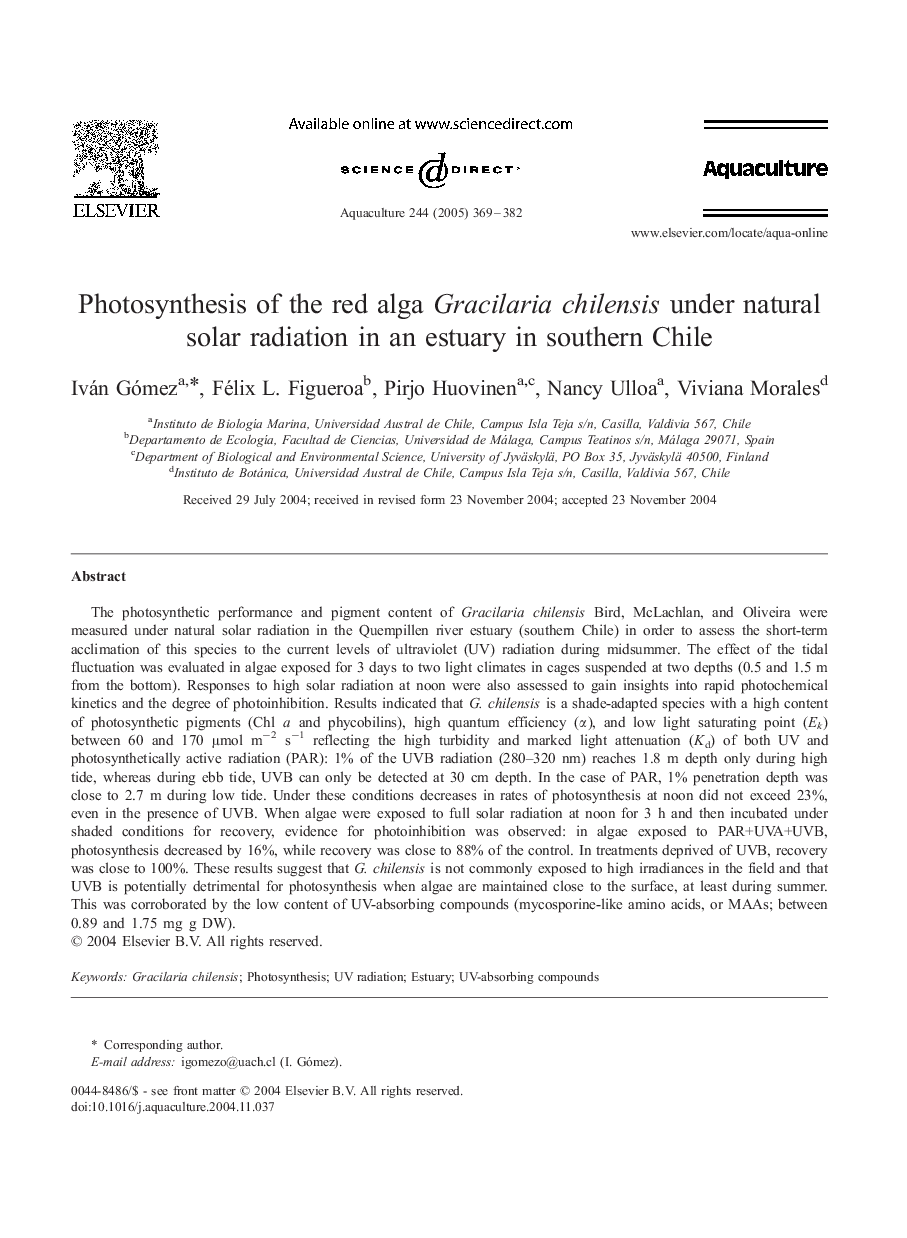| Article ID | Journal | Published Year | Pages | File Type |
|---|---|---|---|---|
| 8974929 | Aquaculture | 2005 | 14 Pages |
Abstract
The photosynthetic performance and pigment content of Gracilaria chilensis Bird, McLachlan, and Oliveira were measured under natural solar radiation in the Quempillen river estuary (southern Chile) in order to assess the short-term acclimation of this species to the current levels of ultraviolet (UV) radiation during midsummer. The effect of the tidal fluctuation was evaluated in algae exposed for 3 days to two light climates in cages suspended at two depths (0.5 and 1.5 m from the bottom). Responses to high solar radiation at noon were also assessed to gain insights into rapid photochemical kinetics and the degree of photoinhibition. Results indicated that G. chilensis is a shade-adapted species with a high content of photosynthetic pigments (Chl a and phycobilins), high quantum efficiency (α), and low light saturating point (Ek) between 60 and 170 μmol mâ2 sâ1 reflecting the high turbidity and marked light attenuation (Kd) of both UV and photosynthetically active radiation (PAR): 1% of the UVB radiation (280-320 nm) reaches 1.8 m depth only during high tide, whereas during ebb tide, UVB can only be detected at 30 cm depth. In the case of PAR, 1% penetration depth was close to 2.7 m during low tide. Under these conditions decreases in rates of photosynthesis at noon did not exceed 23%, even in the presence of UVB. When algae were exposed to full solar radiation at noon for 3 h and then incubated under shaded conditions for recovery, evidence for photoinhibition was observed: in algae exposed to PAR+UVA+UVB, photosynthesis decreased by 16%, while recovery was close to 88% of the control. In treatments deprived of UVB, recovery was close to 100%. These results suggest that G. chilensis is not commonly exposed to high irradiances in the field and that UVB is potentially detrimental for photosynthesis when algae are maintained close to the surface, at least during summer. This was corroborated by the low content of UV-absorbing compounds (mycosporine-like amino acids, or MAAs; between 0.89 and 1.75 mg g DW).
Related Topics
Life Sciences
Agricultural and Biological Sciences
Aquatic Science
Authors
Iván Gómez, Félix L. Figueroa, Pirjo Huovinen, Nancy Ulloa, Viviana Morales,
